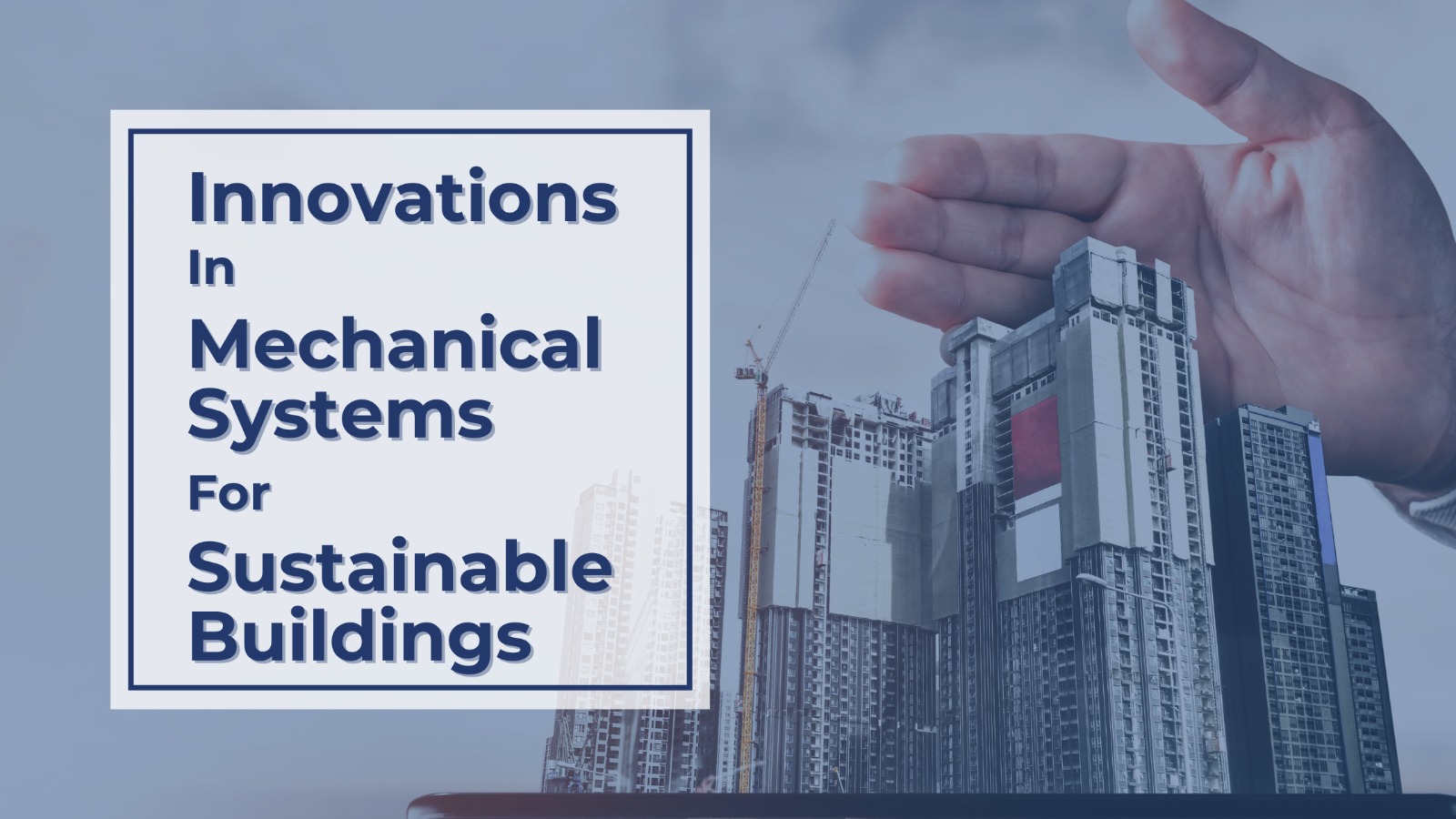Innovations in Mechanical Systems for Sustainable Buildings
22 May 2024Introduction
As the demand for sustainable buildings continues to rise, innovations in mechanical systems play a crucial role in achieving energy efficiency and environmental sustainability. These advancements not only reduce the carbon footprint of buildings but also enhance occupant comfort and operational efficiency. This blog explores some of the latest innovations in mechanical systems that are shaping the future of sustainable building design.
HVAC Systems
One of the most significant areas of innovation in mechanical systems for sustainable buildings is Heating, Ventilation, and Air Conditioning (HVAC). Traditional HVAC systems are often energy-intensive, contributing to high operational costs and environmental impact. However, modern HVAC systems are incorporating various technologies to improve efficiency and sustainability.
1. Variable Refrigerant Flow (VRF) Systems:
VRF systems allow precise control of refrigerant flow to different zones within a building, providing individualized comfort and reducing energy consumption. By adjusting the refrigerant flow based on demand, VRF systems can operate more efficiently than traditional HVAC systems.
2. Geothermal Heat Pumps:
Geothermal heat pumps leverage the stable temperature of the earth to provide heating and cooling. By exchanging heat with the ground, these systems can achieve significantly higher efficiency compared to conventional air-source heat pumps. Geothermal systems also reduce reliance on fossil fuels, contributing to lower greenhouse gas emissions.
3. Smart HVAC Controls:
The integration of smart controls and IoT devices in HVAC systems allows for real-time monitoring and optimization of energy use. Advanced algorithms can adjust temperature settings based on occupancy patterns, weather conditions, and energy prices, leading to substantial energy savings.
Building Automation Systems
Building Automation Systems (BAS) are integral to modern sustainable buildings, enabling centralized control and monitoring of various mechanical systems. Innovations in BAS technology are enhancing the ability to manage energy consumption and optimize building performance.
1. Integrated Building Management Systems:
Advanced BAS platforms integrate HVAC, lighting, security, and other building systems into a single interface. This integration allows for coordinated control, leading to improved energy efficiency and operational effectiveness. For example, lighting and HVAC systems can be synchronized to adjust based on occupancy, reducing unnecessary energy use.
2. Predictive Maintenance:
With the advent of predictive analytics, BAS can now forecast equipment failures and maintenance needs. By analyzing data from sensors and historical performance, predictive maintenance algorithms can identify potential issues before they become critical, reducing downtime and extending the lifespan of mechanical systems.
3. Demand Response:
BAS can also participate in demand response programs, adjusting energy consumption during peak periods to reduce strain on the grid. This capability not only lowers energy costs for building owners but also contributes to the stability of the broader energy network.
Renewable Energy Integration
Integrating renewable energy sources with mechanical systems is a key strategy for achieving sustainability in buildings. Innovations in this area are making it easier to harness and utilize renewable energy effectively.
1. Solar Thermal Systems:
Solar thermal systems use solar energy to heat water or air for building use. These systems can be integrated with HVAC and domestic hot water systems, reducing reliance on conventional energy sources. Advances in solar collector technology have improved efficiency and reduced costs, making solar thermal a viable option for many buildings.
2. Combined Heat and Power (CHP):
CHP systems generate electricity and useful thermal energy from a single fuel source, typically natural gas or biomass. By utilizing waste heat for heating or cooling, CHP systems can achieve overall efficiency levels of up to 80%, significantly higher than conventional power generation methods.
3. Energy Storage Solutions:
Energy storage technologies, such as batteries and thermal storage, are becoming increasingly important for balancing renewable energy supply and demand. Innovations in energy storage allow buildings to store excess energy generated from renewable sources and use it during periods of high demand or low production.
High-Performance Building Envelopes
The building envelope, which includes walls, roofs, windows, and doors, plays a critical role in the overall energy performance of a building. Innovations in building envelope design and materials are enhancing the thermal performance and sustainability of buildings.
1. Advanced Insulation Materials:
New insulation materials, such as aerogels and vacuum insulated panels, offer superior thermal resistance with minimal thickness. These materials improve the energy efficiency of building envelopes by reducing heat transfer, leading to lower heating and cooling loads.
2. Dynamic Glazing:
Dynamic glazing technologies, such as electrochromic and thermochromic windows, can change their properties based on environmental conditions. These windows can adjust their tint to control solar heat gain and glare, improving occupant comfort and reducing the need for artificial cooling.
3. Green Roofs and Walls:
Green roofs and living walls provide natural insulation and reduce the urban heat island effect. They also enhance biodiversity, manage stormwater, and improve air quality. Advances in lightweight and modular green roofing systems are making it easier to incorporate these features into buildings.
Conclusion
Innovations in mechanical systems are at the forefront of the push towards sustainable building design. From advanced HVAC systems and building automation to renewable energy integration and high-performance building envelopes, these technologies are transforming how buildings are designed, constructed, and operated. As the industry continues to evolve, these innovations will play a critical role in achieving the goals of energy efficiency, environmental sustainability, and occupant comfort.
